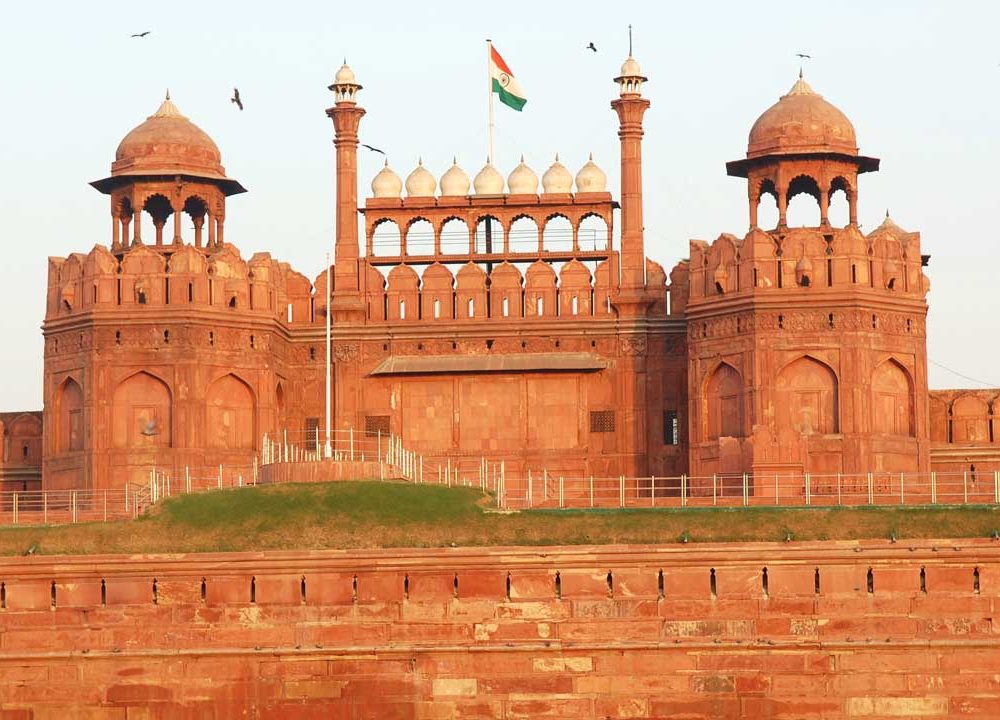I think Americans are divided into two camps on the subject of visiting India: Half of the people I meet either love India or can’t wait to visit while the other half say they’d never consider going to India.
Obviously, in deciding to do two episodes this season on destinations in India, I’m a huge fan of the country. I’ve visited several times and, yes, I took ill one time, but a shot from a doctor called by my hotel fixed that. And you know what? I’ve gotten food poisoning in the U.S., as well. The colors, the excitement, the architecture, the landscape, the foods, and–most of all–the people made me fall in love with India.
Most first-time visitors do the “Golden Triangle” on a first visit—Delhi, Agra, and Jaipur—and I think it’s a great way to start your exploration of one of the world’s fastest-growing countries.
Rudy’s Travel Tips
- “Old” Delhi is the original downtown where locals still do much of their shopping. Most upscale hotels are in New Delhi, but getting to and from both neighborhoods is easy by taxi. Visiting the crowded alleys of Old Delhi is a must. Go to dine on kabobs, korma, and other Mughlai food at Karim’s near the Jama Masjid, the largest mosque in India. Marvel at the myriad of stores selling stationery, beads and bangles, saris, hubcaps, used car mirrors, pots and pans, spices, sweets, clothing, silver, leather, and every other item under the sun plus some you can’t imagine.
- You’ll note that similar shops are grouped together in an informal market. Locals know Asia’s largest hardware market is at Chawri Bazaar and Ajmeri Gate; Asia’s largest paper market is at Chawri Bazaar; the cloth market is at Chandni Chowk; the cycle market is on Esplanade Road; the fireworks market is at Paiwalan (at the Jama Masjid behind the Ivory Palace); and the kite market is at Lal Kuan. Don’t worry about all these names—just go and wander for a day.
- Don’t be surprised if you’re invited to sit on mattresses on the floor of Old Delhi shops if you’re shopping for fabric or saris or sliver. It’s the traditional way of doing business. Go ahead and accept an offer of hot tea—you’re not obligated to purchase anything just because you enjoy a cup.
- Remember if you want to visit mosques, modest dress is a good idea. But also remember Old Delhi can be a dusty, hot part of town, so dress comfortably and be sure to wear good walking shoes. Always remove your shoes before entering a mosque.
- Make sure your camera has a digital chip that holds lots of photos—the opportunities are endless. Always ask permission before shooting a close up of an individual. Most Indians are more than happy to be photographed, especially if you have a digital camera that allows you to show them the photo immediately after you take it.
- The Red Fort is just across a wide street from the old market—give yourself about two hours wander the gardens and buildings of the enormous fort. (See “Where We Went’ for specific information about sites.)
- India’s tailors are famous for being able to copy almost any garment, even from a photograph. Men can buy a custom-made dress shirt (it takes about 24 hours) for about $25 from a reputable tailor.
- The two biggest chains of luxury hotels in India are Taj and Oberoi, and both equal or surpass what you’d expect to find in terms of service and accommodations at a Four Seasons, Ritz-Carlton or Park Hyatt hotel in the U.S.
- Be cautious in eating street food. Stick to reputable restaurants or hotel eateries where standards of kitchen cleanliness are more likely to be first rate.







